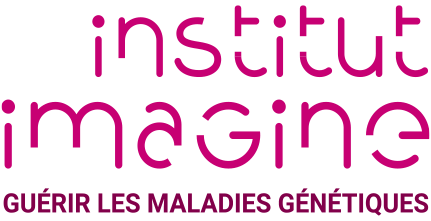Published on 30.07.2025
« In 1994, the field of bone biology was significantly advanced by the discovery that activating mutations in the fibroblast growth factor receptor 3 (FGFR3) receptor tyrosine kinase (TK) account for Achondroplasia » Laurence Legeai-Mallet, Inserm Research Director at Institut Imagine (Inserm, AP-HP, Université Paris Cité), recently explained to Cahiers de l'Inserm. Achondroplasia (ACH), the most common form of dwarfism, and hypochondroplasia (HCH), a less severe form, are both the consequence of gain-of-function mutations (hyperactive protein) in the FGFR3 gene. After identifying the responsible gene, the team developed cell and animal models to better understand these diseases, and test the efficacy of various therapeutic molecules.
Several treatments are currently being developed to reduce these growth defects. After vosoritide (marketed in 2021 under the name Voxzogo) and infigratinib (currently in phase 3 trials), the team has recently evaluated the efficacy of a new molecule, TYRA-300, synthesized by the company Tyra Biosciences. This small molecule, a tyrosine kinase inhibitor specifically inhibiting FGFR3 (and not other members of the FGFR family), could be more effective, and with a wider therapeutic window, than non-selective FGFR inhibitors.
The efficacy of TYRA-300 was evaluated in ACH and HCH mice, for which infigratinib has already shown efficacy. In an article recently published in JCI Insight, Laurence Legeai-Mallet's team shows that after 2 weeks of daily treatment for ACH mice and 3 weeks of daily treatment for HCH mice, TYRA-300 increases total growth velocity and long bone growth. Skull shape and size were also improved; bone parameters of long bones, vertebrae and intervertebral disc architecture were also partially corrected, suggesting that the molecule has an effect on the entire musculoskeletal system.
The researchers also studied the ossification process over time and confirmed that cartilage cell proliferation and differentiation, as well as osteogenesis, were disrupted by Fgfr3 mutations. The team showed that TYRA-300 restores growth plate architecture by increasing cartilage cell proliferation and differentiation.
Overall, the current study demonstrates that TYRA-300 effectively promotes bone growth in two models of chondrodysplasia linked to FGFR3 mutations. TYRA-300 is therefore the first selective FGFR3 inhibitor to be evaluated in these models. In the future, TYRA-300 may offer a wider therapeutic window than the non-selective FGFR inhibitors currently in development. Taken together, these data justify the initiation of a clinical trial of TYRA-300 in children with ACH, HCH and potentially other FGFR3-related osteochondrodysplasias, in the hope of developing an effective, safe and universally accessible treatment.
Reference :
TYRA-300, an FGFR3-selective inhibitor, promotes bone growth in two FGFR3-driven models of chondrodysplasia
Starrett JH*, Lemoine C*, Guillo M* et al., JCI Insight, 2025
Corresponding author : Laurence Legeai-Mallet
